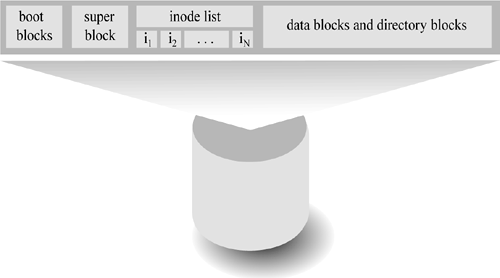Introduction
A filesystem is Linux's mechanism for organizing the contents of the various types of mass storage (e.g., hard disk, floppy disk, or CD-ROM) and presenting them to the user. To better understand the applicable commands, the following cursory description of the structure of a filesystem is presented next (see also the diagram in Figure 12-1).
Figure 12-1. Filesystem Structure

The boot block contains information necessary for Linux to access the filesystem. The superblock contains information about the structure of the filesystem itself (length, size, and location of the inode tables; usage information; size of the cylinder groups). ...
Get Linux® Desk Reference, Second Edition now with the O’Reilly learning platform.
O’Reilly members experience books, live events, courses curated by job role, and more from O’Reilly and nearly 200 top publishers.

